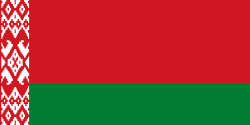Australian Open 2010 – ženská čtyřhra
Turnaj Australian Open 2010 se konal ve dnech 18. - 31. ledna tradičně na dvorcích s tvrdým povrchem v Melbourne. Titul v ženské čtyřhře obhajovaly sestry Serena a Venus Williamsovy a obhájily jej, když ve finále porazily Caru Blackovou a Liezel Huberovou 6–4, 6–3.
Nasazení hráček
V závorce je kolo, ve kterém hráčky vypadly.
|
|
Pavouk
Finálová fáze
| Čtvrtfinále | Semifinále | Finále | |||||||||||||||||
| 1 | | 6 | 6 | ||||||||||||||||
| 7 | | 3 | 4 | ||||||||||||||||
| 1 | | 6 | 1 | 6 | |||||||||||||||
| 15 | | 1 | 6 | 3 | |||||||||||||||
| 15 | | 6 | 6 | ||||||||||||||||
| WC | | 4 | 1 | ||||||||||||||||
| 1 | | 4 | 3 | ||||||||||||||||
| 2 | | 6 | 6 | ||||||||||||||||
| 6 | | 4 | 6 | 6 | |||||||||||||||
| 13 | | 6 | 2 | 2 | |||||||||||||||
| 6 | | 3 | 66 | ||||||||||||||||
| 2 | | 6 | 7 | ||||||||||||||||
| 8 | | 4 | 6 | 4 | |||||||||||||||
| 2 | | 6 | 4 | 6 | |||||||||||||||
Horní polovina
1. Sekce
2. Sekce
Dolní polovina
3. Sekce
4. Sekce
Související články
- Australian Open
- Seznam vítězek ženské čtyřhry na Australian Open
- Australian Open 2010 - mužská dvouhra
- Australian Open 2010 - ženská dvouhra
- Australian Open 2010 - mužská čtyřhra
- Australian Open 2010 - smíšená čtyřhra
Externí odkazy
Média použitá na této stránce
Chinese Taipei Olympic Flag. According to the official website of Chinese Taipei Olympic Committee, Blue Sky(circle) & White Sun(triangles) above the Olympic rings is neither the National Emblem of the Republic of China, nor the Party Emblem of Kuomintang (KMT), but a design in between, where the triangles do not extend to the edge of the blue circle, as registered at International Olympic Committee in 1981 and digitally rendered in 2013. Besides, the blue outline of the five-petaled plum blossom is broader than the red one. Moreover, the CMYK code of the blue one and the Blue Sky & White Sun is "C100-M100-Y0-K0", and different from the Olympic rings (C100-M25-Y0-K0). Note that it's the only version recognized by IOC.
Flag of Australia, when congruence with this colour chart is required (i.e. when a "less bright" version is needed).
See Flag of Australia.svg for main file information.Vlajka České republiky. Podoba státní vlajky České republiky je definována zákonem České národní rady č. 3/1993 Sb., o státních symbolech České republiky, přijatým 17. prosince 1992 a který nabyl účinnosti 1. ledna 1993, kdy rozdělením České a Slovenské Federativní republiky vznikla samostatná Česká republika. Vlajka je popsána v § 4 takto: „Státní vlajka České republiky se skládá z horního pruhu bílého a dolního pruhu červeného, mezi něž je vsunut žerďový modrý klín do poloviny délky vlajky. Poměr šířky k její délce je 2 : 3.“
bendera Indonesia
Used color: National flag | South African Government and Pantone Color Picker
| zelená | rendered as RGB 0 119 73 | Pantone 3415 C |
| žlutá | rendered as RGB 255 184 28 | Pantone 1235 C |
| červená | rendered as RGB 224 60 49 | Pantone 179 C |
| modrá | rendered as RGB 0 20 137 | Pantone Reflex Blue C |
| bílá | rendered as RGB 255 255 255 | |
| černá | rendered as RGB 0 0 0 |
Flag of Canada introduced in 1965, using Pantone colors. This design replaced the Canadian Red Ensign design.
This is the national flag of Belgium, according to the Official Guide to Belgian Protocol. It has a 13:15 aspect ratio, though it is rarely seen in this ratio.
Its colours are defined as Pantone black, Pantone yellow 115, and Pantone red 032; also given as CMYK 0,0,0,100; 0,8.5,79,0; and 0,94,87,0.The national flag of Kingdom of Thailand; there are total of 3 colours:
- Red represents the blood spilt to protect Thailand’s independence and often more simply described as representing the nation.
- White represents the religion of Buddhism, the predominant religion of the nation
- Blue represents the monarchy of the nation, which is recognised as the centre of Thai hearts.







































